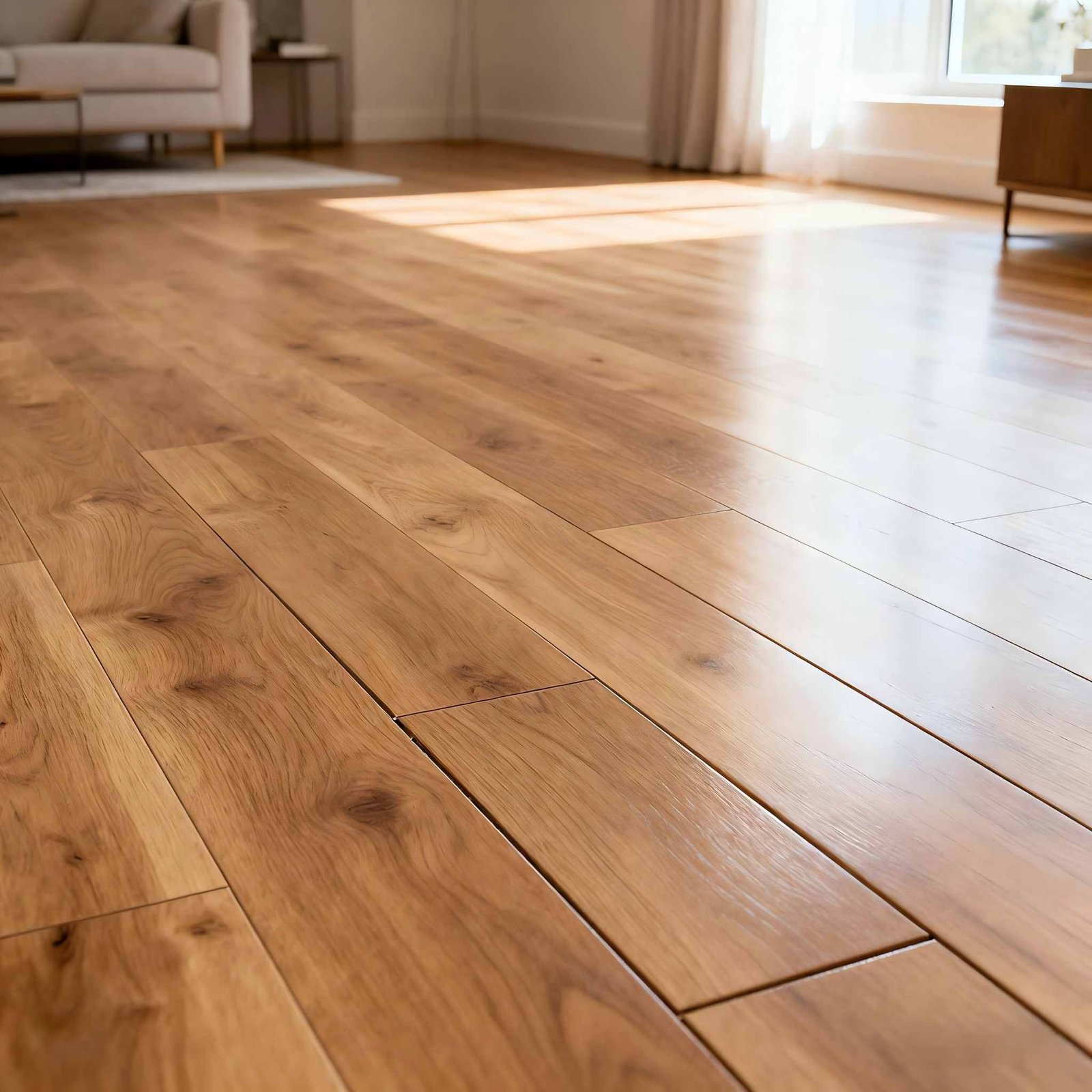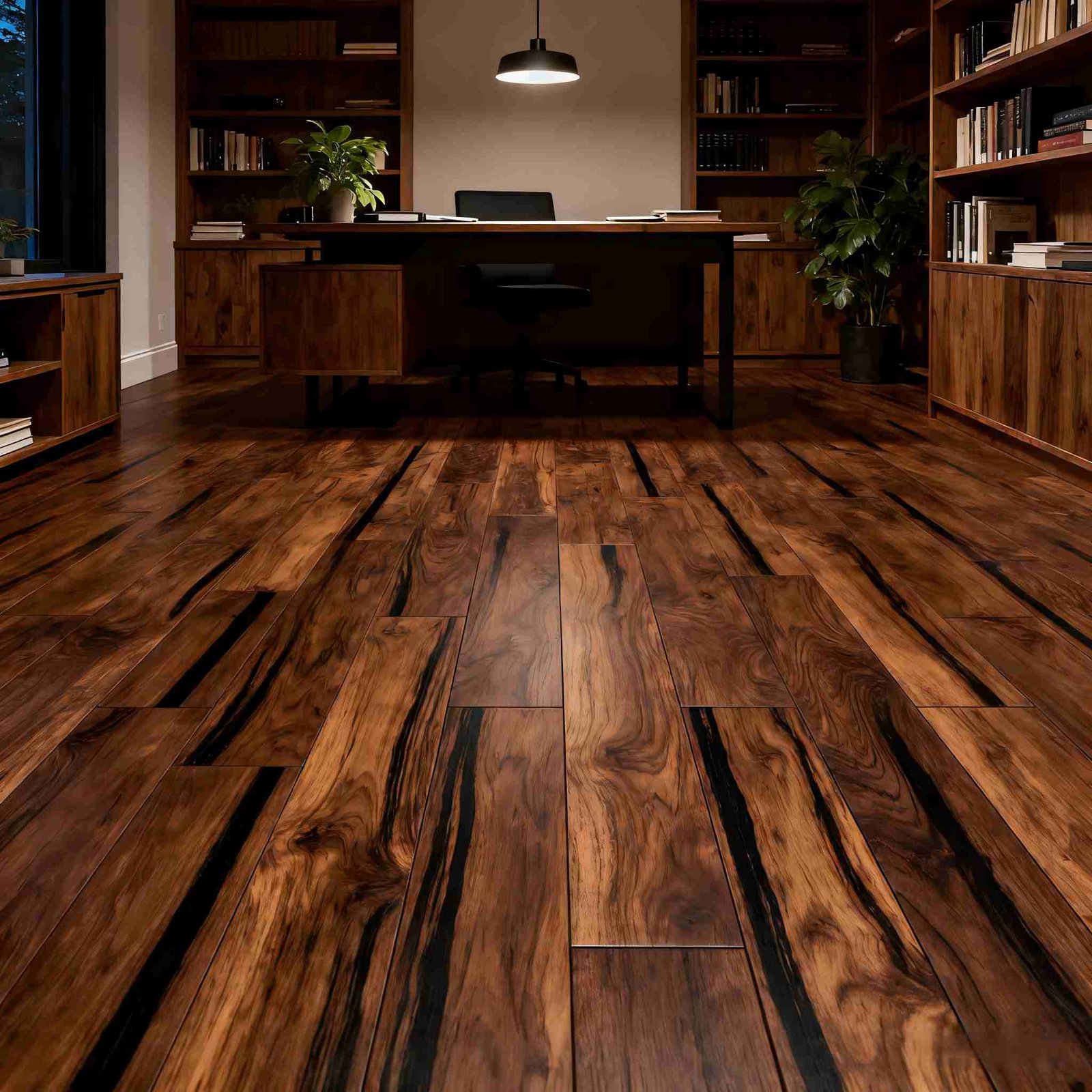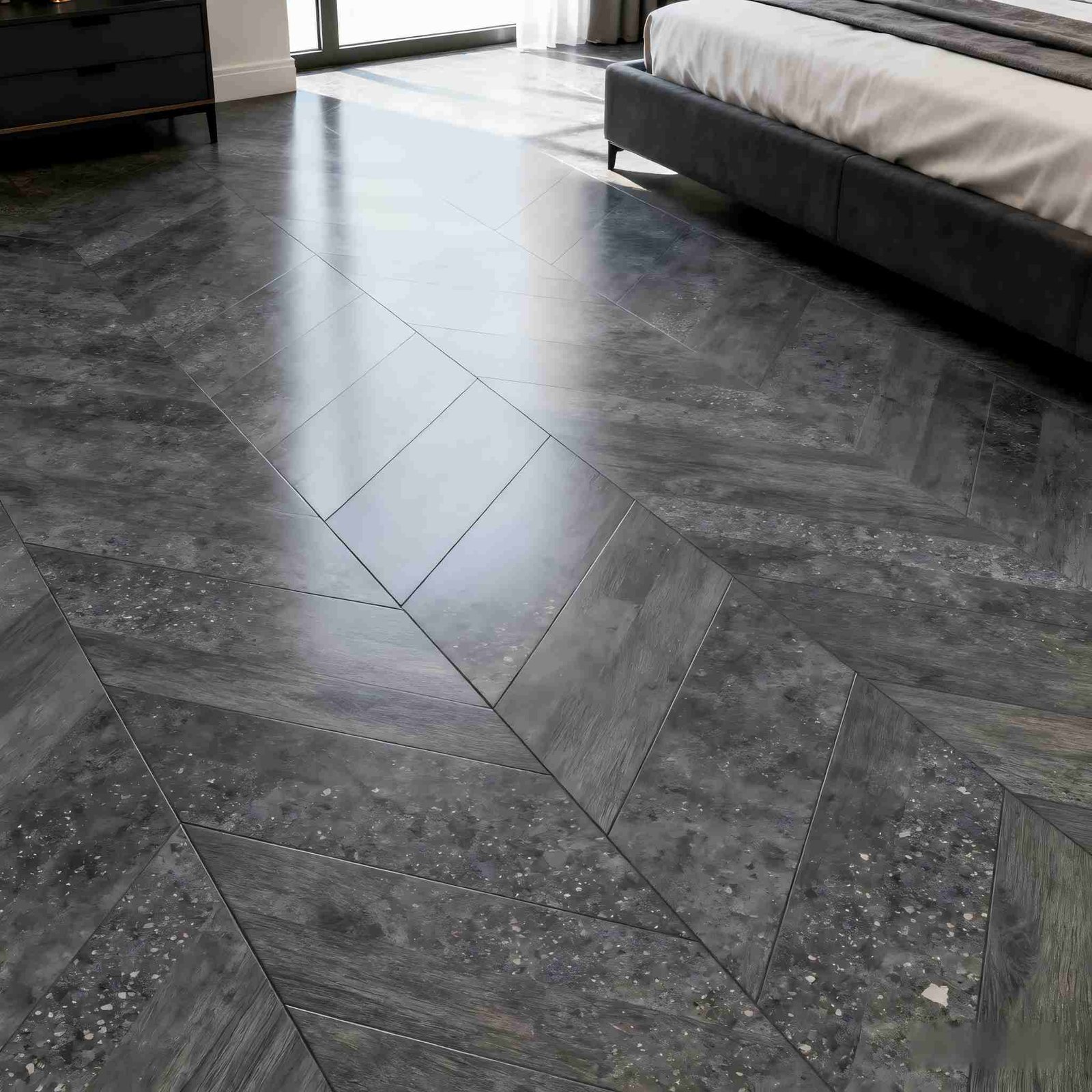
Picture this. You’re knee-deep in a home reno. Coffee’s in one hand. The tape measure’s in the other. And you’re staring down a stack of flooring samples. The budget’s tight right now. But you want floors that look sharp. They need to hold up to kids’ muddy boots. And maybe even bump up that home value down the road. Laminate vs. engineered hardwood. It’s the showdown every homeowner faces. One’s the scrappy underdog. It dishes out big style on a dime. The other’s the premium pick. It promises that real-wood swagger. Plus, it comes with a side of longevity. But which one really delivers on cost versus value? We’re diving in. No fluff here. We’ll sort it out. By the end, you’ll know if laminate’s your quick win. Or if engineered hardwood’s worth the splurge.
What Makes Laminate Flooring Tick?
Laminate flooring? It’s like the reliable pickup truck of the flooring world. It’s tough. Straightforward. And it gets the job done without breaking the bank. At its core, it’s a four-layer sandwich. There’s a sturdy aluminum oxide topcoat. It shrugs off scratches and spills. Then, a printed paper layer mimics wood grains. Think oak or walnut. Next, a high-density fiberboard base adds stability. And a balancing backer keeps things flat. It fights off humidity swings. Folks, thicknesses run from a slim 6mm up to a beefy 12mm. Plank sizes hit standards like 1218mm by 198mm. That’s easy to handle for weekend warriors.
What I love about it—and yeah, I’ve laid miles of this stuff in basements and kitchens—is how it floats right over your subfloor. It uses a click-lock system. No glue. No nails. Just snap and go. It’s got solid water resistance too. That sealed structure handles spills. They wipe up without warping the planks. Abrasion classes go from AC1 for light-duty spots. Up to AC5 for heavy traffic. So, you can pick your poison based on the chaos level in your house. And eco-wise? Many hit E0 or E1 formaldehyde ratings. So, it’s not dumping chemicals into your air. Not like some older stuff did back in the day.
But let’s be real. It’s not all sunshine. Walk across it in socks. And you might hear that telltale hollow click. It’s like tap shoes on a stage. Repair? Tricky if a plank gets gouged. You’re often replacing a whole row. Still, for busy families, it’s a champ. It fakes high-end looks without the fuss.
Decoding Engineered Hardwood
Now, flip the script to engineered hardwood. This one’s got actual wood in the game. A thin veneer of real hardwood. Think oak or maple. It’s sliced and glued atop plywood layers. That gives authentic grain and warmth. It’s engineered, sure. But it breathes like solid wood. It expands and contracts with the seasons. Thicknesses hover around 3/8-inch to 3/4-inch. Planks are often wider. They create that modern, plank-wall vibe.
The appeal? That genuine feel underfoot. It’s soft. Not plasticky. And you can sand and refinish it a few times. That’s over 25-50 years. It’s got better sound insulation too. No echoing like laminate can have. But here’s the rub. It’s fussier with moisture. Install it wrong in a damp basement. And those layers could delaminate. Faster than you can say "cupping." Pros rate its durability high. Janka hardness scores in the 1,000-1,500 range for common species. But it dents easier than laminate’s armored surface.
I’ve seen it shine in living rooms. Folks want that heirloom quality there. The kind that polishes up nice for holiday gatherings. Downside? It’s heavier. It needs acclimation time before install. And if you’re in a humid spot like Florida, forget floating it. Nail it down. Or glue it up.
Breaking Down the Costs: Upfront and Over Time

Alright, let’s talk dollars. Because that’s where this laminate vs. engineered hardwood debate gets spicy. Upfront, laminate’s the clear budget buddy. We’re looking at $1 to $5 per square foot for materials alone in 2025. It depends on thickness and style. Throw in DIY install. And you’re out maybe $2-6 total per sq ft. Engineered hardwood? Starts at $3. It climbs to $10 or more. Averages hit $7-16 when you factor in pro labor. That’s a $4-10 gap per sq ft. Ouch for a 500-sq-ft room. It adds up to $2,000-5,000 extra.
But value’s not just the sticker shock. Maintenance creeps in sneaky. Laminate? Sweep and damp-mop weekly. No refinishing bills. Engineered might need occasional oiling. Or a pro refinish every 10-15 years. That tacks on $2-4 per sq ft each go-round. Resale? Hardwood edges it out. It potentially boosts home value by 3-5% in hot markets. Per real estate pros. Laminate holds steady. But it doesn’t wow appraisers quite the same.
Here’s a quick side-by-side to chew on:
Aspect Laminate Flooring Engineered Hardwood
Material Cost per Sq Ft $1-5 $3-10
Install Cost per Sq Ft $1-2 (DIY easy) $3-6 (pro recommended)
Annual Maintenance $0-50 (basic cleaning) $50-200 (oiling/refinishing)
Lifespan (Years) 10-25 25-50+
Resale Value Boost Minimal (1-2%) Moderate (3-5%)
Numbers pulled from 2025 flooring guides. Your mileage varies by region. But you get the picture. Laminate saves cash now. Engineered pays dividends later. If you’re in it for the long haul.
Value on the Line: Durability, Looks, and Lifestyle Fit
Durability Deep Dive
Durability’s where opinions split. Like a bad divorce. Laminate’s got that aluminum oxide armor. AC3 or higher handles pets. It takes parties. And dropped pots without flinching. Tests show it outlasting vinyl. In scratch resistance for high-traffic zones. Engineered hardwood? Real wood means real character. But also real vulnerability. A Janka-tested oak top might dent from heels. Though the multi-layer setup keeps it from splintering. Not like solid boards can. In a 2025 durability roundup, engineered scored higher for longevity. But lower for everyday abuse.
Take my buddy’s rental. Laminate in the entryway took three years of tenant turnover. Without a hitch. Engineered in his own den? A single furniture drag left a scar. It needed buffing.
Maintenance: The Real Time-Suck?
Nobody’s got time for high-maintenance floors. Laminate wins here. Vacuum. Spot-clean stains with soap. Done. No waxing rituals. Engineered demands more. Avoid standing water. Use felt pads under chairs. And plan for that refinish when the topcoat dulls. It’s not rocket science. But in a household with toddlers or dogs, those extra steps add up. One flooring vet I chatted with swore laminate cut his chore time in half. It let him sneak in a round of golf instead.
Aesthetics and Resale: What Stands the Test?
Looks-wise, both can fool the eye from afar. Laminate’s high-res prints nail embossed textures. Think hand-scraped oak that feels almost rugged. But up close? Engineered’s natural variations shine. Knots and patina scream "premium." Resale’s the kicker. Hardwood’s allure can net you thousands more at closing. Especially in upscale neighborhoods. Laminate? Solid for flips. But it doesn’t turn heads like wood.
Pro for laminate aesthetics: Endless patterns. From rustic walnut to sleek birch. All customizable.
Con: Fades faster under direct sun. UV protectants help. But not forever.
Pro for engineered: Refinishes reveal fresh layers. They evolve with your life.
Con: Pricier to match existing floors if you’re patching.
Installation: DIY Dream or Pro Headache?
Laminate’s install is a breeze. Unbox. Acclimate a day. Click together over underlayment. A 200-sq-ft room? Knock it out in a weekend. With basic tools. Engineered? Trickier. It needs a flat subfloor. Often nails or adhesive. And pros charge extra for that precision. In humid areas, skip the float. Glue it down. Or risk bubbles. Data from installers shows laminate jobs 40% faster. It saves $500-1,000 on labor.
One caveat: Sloppy subfloor prep bites both. But laminate forgives minor dips better.
When Laminate Wins the Day (or Doesn’t)
Laminate shines in rentals. Playrooms. Or basements. Spots where spills rule. And budgets bite. Imagine a young family in Chicago. Kids’ art projects everywhere. Dog zooming around. Laminate’s waterproof edge and $3k total cost kept them sane. Engineered? Better for formal dining. Or master suites. Where that warm glow justifies the $8k tab. But in a flood-prone spot? Laminate laughs it off. Engineered might swell.
It’s not black-and-white. If you’re flipping houses, laminate’s quick ROI rules. Staying put 20 years? Engineered’s value compounds. Like a good stock.
Why Lanhe Flooring Stands Out for Your Next Project

When you’re ready to pull the trigger on laminate, Lanhe Flooring’s the name to know. Based out of Shandong, China, this crew’s been cranking out top-notch laminate and SPC for over a decade. They export to spots like North America and Europe. With a rep for quality that sticks. They run fully automated lines. From raw HDF to finished planks. Hitting certifications like FloorScore for low emissions. And CE for safety. No shortcuts. What sets them apart? Custom vibes. Pick your thickness (6-12mm). Textures from embossed oak to smooth walnut. Even mix patterns for that one-of-a-kind look. Their click-lock systems make install a snap. And with AC3-AC5 ratings, these floors handle real life. From coffee spills to furniture shuffles. Plus, they’re all about keeping it green. With E0 adhesives. Lanhe’s not just selling planks. They’re hooking you up with durable, stylish options. Ones that fit your wallet. And your wild home stories. Check their lineup. It’s the smart play for value-driven folks.
Wrapping It Up: Your Floor, Your Call
So, laminate vs. engineered hardwood? It’s less a versus. More a "depends on your dance." If cash flow’s king. And life’s messy. Laminate delivers punchy value without the drama. Affordable. Tough. And ready for tomorrow’s chaos. Crave that timeless wood soul? With refinishes and resale perks? Engineered’s your ride. Even if it pinches the purse. Either way, weigh your space. Your style. And how long you’re planting roots. Folks, floors aren’t just underfoot. They’re the stage for your daily grind. Pick smart. And it’ll feel right every step.
FAQs
What’s the biggest edge laminate has over engineered hardwood in a laminate vs. engineered hardwood cost showdown?
Laminate keeps things wallet-friendly at $1-5 per square foot. Versus engineered’s $3-10 jump. That’s huge for basements or rentals. Where you want durability without the premium tag. Plus, its click-install saves on labor headaches.
How does durability stack up in a laminate vs. engineered hardwood value comparison?
Laminate’s aluminum oxide layer fights scratches like a champ. In busy homes. It lasts 10-25 years with minimal fuss. Engineered holds up longer. 25-50+ years. And refinishable. But dents easier from daily life. If pets are in the mix, laminate might edge it. For low-maintenance grit.
Does laminate boost resale value as much as engineered hardwood?
Not quite. Engineered’s real-wood charm can lift home prices by 3-5%. Making it a resale star. Laminate adds practical appeal. But stays neutral. Perfect if you’re not selling soon. Think of it as solid staging. Versus showstopper status.
Is laminate a good pick for moist areas in this laminate vs. engineered hardwood debate?
Absolutely. Its sealed layers handle spills and humidity better than engineered. Which can cup in damp spots. For laundry rooms or entryways, laminate’s your safe bet. Without the warp worries.
How’s maintenance different between laminate and engineered hardwood for everyday value?
Laminate’s a set-it-and-forget-it deal. Sweep. Damp-mop. Repeat. Engineered needs occasional oiling. And eventual refinishing to keep that glow. If you’re short on time—like most of us—laminate frees up weekends. For barbecues, not buffing.


